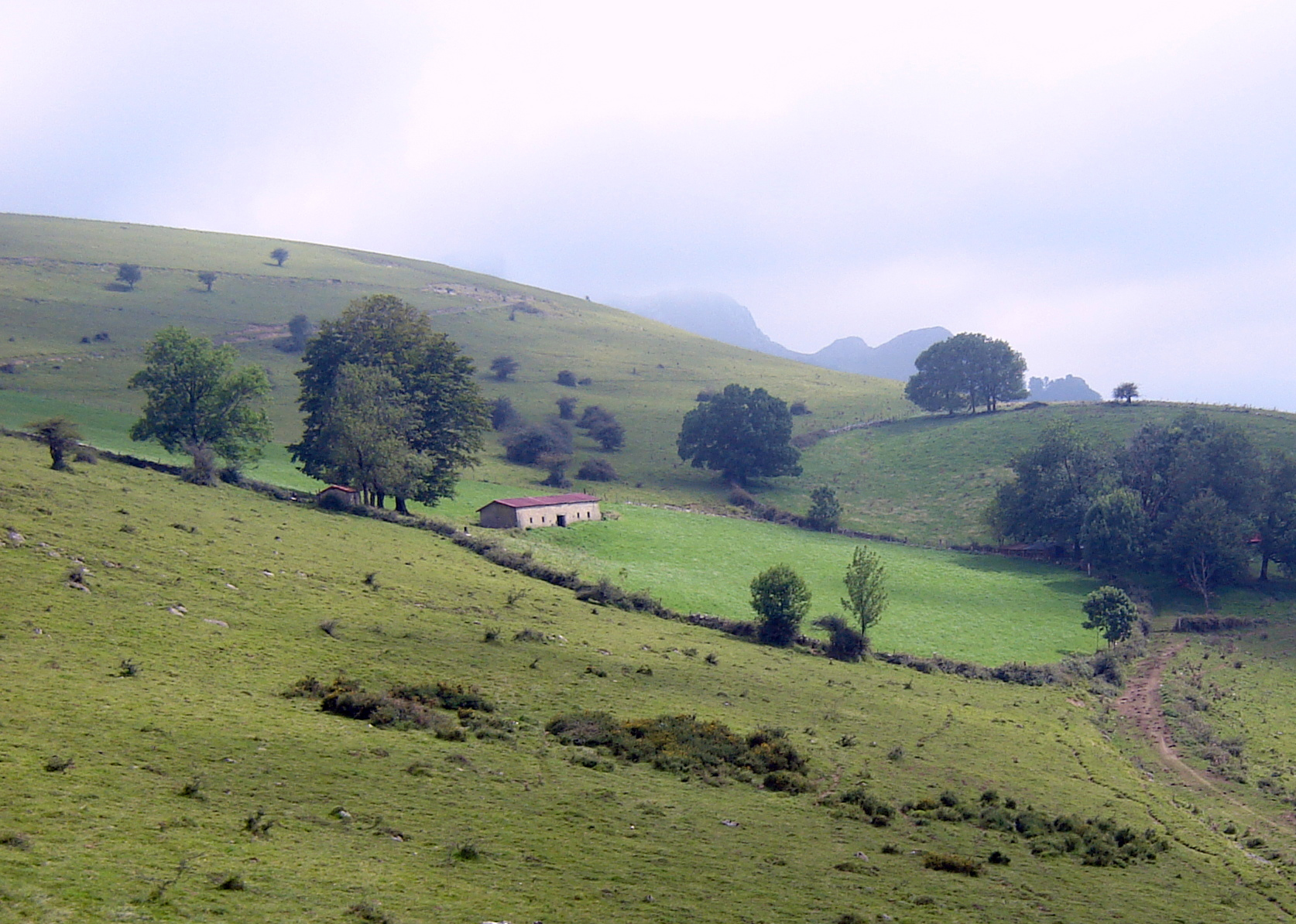Basque ethnography at a glance
Bordaldea (pronounced bordaltia in Zuberoa) refers to a prevailing type of settlement established for livestock farming on so-called syndic land, according to the 1838 Ordinance, replaced by the Mountain Law in 1985. An integral part of the Pyrenean farmstead on middle-mountain steep grassland, loft and stables double the size of the house itself. It is occupied by the bordazain.
By combining personal observations on the Navarrese mountainside with Vizcay Urrutia’s, the following are revealed:
Such an establishment relates to ancestral grazing land known as saroi in Basque alluded to in the 16th-century Lower Navarrese Charter: “los senhors & maëstes deus cuyalaás & saroys deu present royaume” (the lords and masters of huts and mountain pastures of the present kingdom).
It encompasses a basically circular pasture, which is fertilized, grazed and harvested. Its extension can vary from 2 to 3 ha and differs from clearings in the commons or labakiak, for those are rectangular in shape.
Boldaldea evokes the bordal and points to what it is: a borda and its annexes. This allows a better understanding of: 1) the term bordal, documented only in Zuberoa and associated to the traditional hut in the mountains; 2) the component –alde is used to denote the cleared pastureland.
In Navarre the term bordaldea is defined in the context of cereal cultivation, as if it were much more than just a simple structure for livestock. The establishment comprises, evidently, the future garden and the nearby source.
The borda houses livestock and stands distinct from the keeper’s hut or etxola. Occupying the space beneath the arch, called arkua, the loft is reserved to store hay. Similar animal housing is also found in the High Pyrenees, in Bigorre, for instance, where the upper floor can often be accessed independently, in some cases taking advantage of the unevenness of the ground. The hay was transported on the back using a device known locally as iratzuna.
In 1704 the Statues of the Valley of Baigorri give some idea of the atmosphere enveloping the mentioned establishments with regard to open access rights, although articles concern mainly settlements established on cleared land: a) Art. 6: taking up a 1570 regulation, it states “there needs to be a 12-cubit-broad road” between enclosures; b) Art. 20: on the subject of resources, it regulates the harvest of fern to be used for animal bedding; c) possibility is given to “members of the community to plant up to a hundred tree feet in the surroundings of the borda”, etc.
Within the mountain economy the world of the bordalde is called into question. The last borda keepers are gone. A new management is in place to imbue the mountain with life and vitality through restructured pastoral activities, forest usage and planning, tourism and leisure offering.
Michel Duvert – Etniker Iparralde – Etniker Euskalerria Groups
Translated by Jaione Bilbao – Language Department – Labayru Fundazioa
References for further information: Livestock Farming and Shepherding, part of the Ethnographic Atlas of the Basque Country collection; Michel Duvert. Voyage dans le Pays Basque des Bordes, 2008; and Nekane Vizcay Urrutia. “Uso y ocupación del medio natural: un análisis de las bordas en el valle de Erro y Auritz/Burguete” [Use and occupation of the natural environment: an analysis of animal housing in the valley of Erro and Auritz/Burguete] in CEEN, no. 84, 2009.




